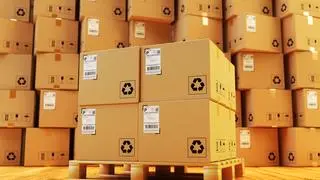Researchers at the Indian Institute of Science Education and Research (IISER), Bhopal, led by Dr Abhijit Patra, have developed a novel method to produce free-standing crystalline nano porous organic films that can separate toxic organic micro-pollutants from water.
Membrane separation is a widely used technique in industry for separating and purifying various substances. The membranes used are usually made of porous material, with the pore size being an important factor in determining their filtration. Scientists have been researching various types of porous material for years. Recently, covalent organic frameworks (COFs) have emerged as promising porous material for membrane-based separation.
COFs are two-dimensional or three-dimensional crystalline porous organic polymers that have unique advantages over other porous material because their structures and functions can be precisely designed. “These materials are lightweight, highly thermally stable, and permanently porous, making them an excellent choice for membrane separation applications,” says a press release.
“The researchers at IISER Bhopal have demonstrated the transformation of an organic imine cage molecule into a free-standing COF film,” it says. The films were nano porous — that is, the pores were a hundred thousand times smaller than the width of a human hair.
Lab-grown bone
Bikramjit Basu, Professor at the Materials Research Centre, and Hardik J Pandya, Associate Professor at the Department of Electronic Systems Engineering, Indian Institute of Science, Bengaluru, recently developed a tool that uses electrical stimulation to grow mouse bone cells in a culture dish. This technology could pave the way for making better implants that can be integrated with fractured bones.
Bones are piezoelectric, meaning they store electric charge when subjected to mechanical stress. This charge accumulation can be useful.
Basu and Pandya prepared a composite material called polyvinylidene difluoride (PVDF) base mixed with barium titanate and carbon nanotubes. They used this as a medium to grow mouse bone cells.
“PVDF is electroactive — its shape and size can change in response to electric charge,” says an article in IISc’s newsletter Kernel. “This medium can therefore mimic the environment inside our body, where piezoelectric bones can undergo growth and modulation in response to accumulation in which the cells are grown in the presence of an electric field, active for 10 minutes a day.”
Membrane’s second coming
The Central Salt and Marine Chemicals Research Institute, Bhavnagar, is giving a second life to discarded reverse osmosis membranes used in desalinating seawater.
They can be used for low-salinity brackish water desalination, wastewater treatment, says CSMCRI. They can also be used for partial substitution of the original application “by enhancing the flow rate but maintaining the salt rejection performance”.
The rejuvenated membrane costs just 15-20 per cent of the cost of new membranes. The technology is ready for transfer to industry. “It is important from an environmental perspective to extend the lifecycle of membrane elements since membrane waste is a hazardous polymeric waste,” says CSMCRI.











Comments
Comments have to be in English, and in full sentences. They cannot be abusive or personal. Please abide by our community guidelines for posting your comments.
We have migrated to a new commenting platform. If you are already a registered user of TheHindu Businessline and logged in, you may continue to engage with our articles. If you do not have an account please register and login to post comments. Users can access their older comments by logging into their accounts on Vuukle.